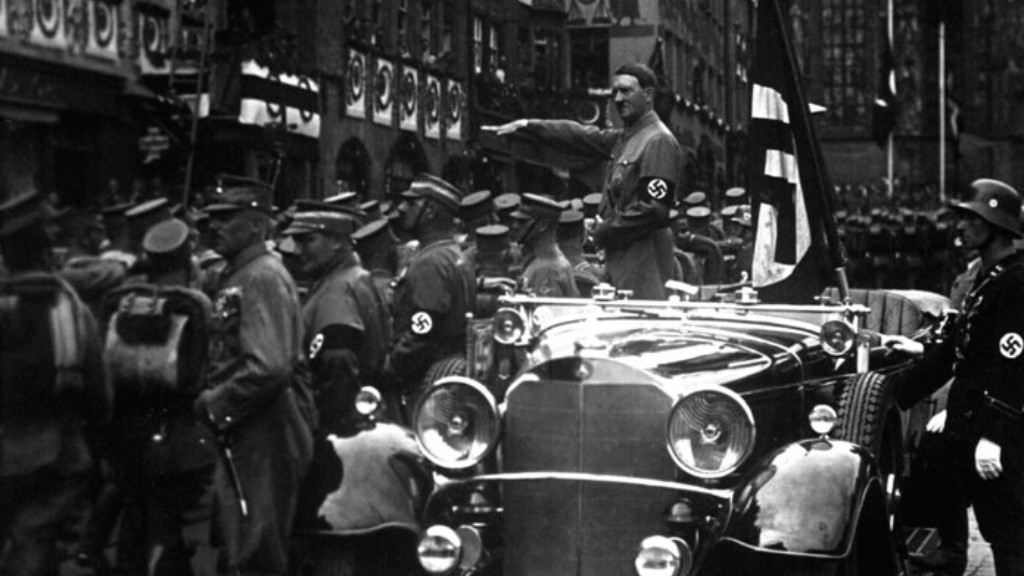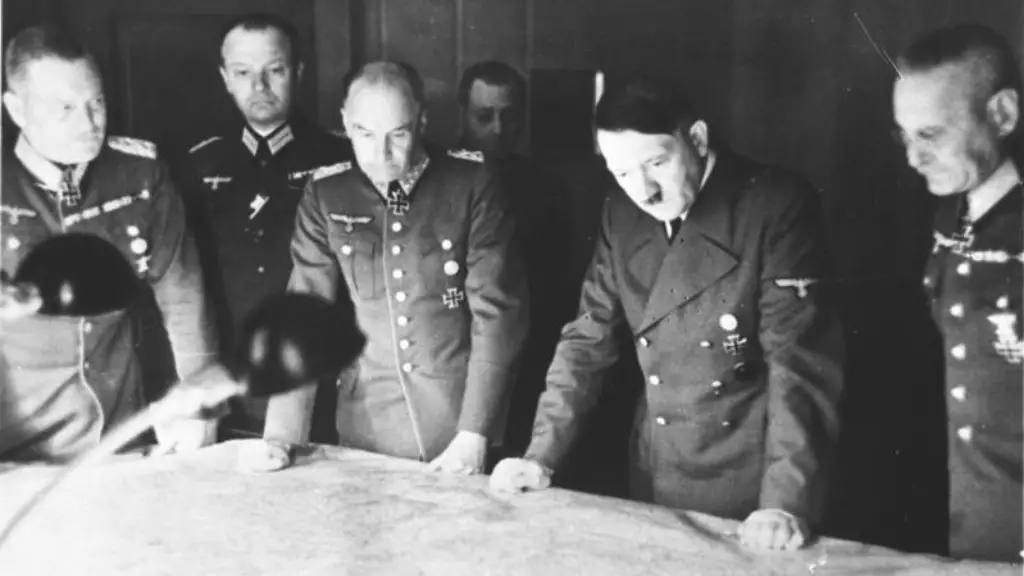There are a number of reasons Saddam Hussein may have had for starting the war with Iran. One possibility is that he saw Iran as a weak and divided country, ripe for conquest. Additionally, Hussein may have wanted to take advantage of Iran’s instability following the Iranian Revolution in 1979. Additionally, Iraq and Iran had a long history of conflict, dating back to the days of the Ottoman Empire, which may have also played a role in Hussein’s decision to start a war.
The reason for Saddam Hussein’s start of the war with Iran is disputed. Some believe that it was part of his plan to become the dominant power in the Middle East, while others believe that he was was acting in response to Iran’s support of insurgents in Iraq.
Why did Saddam Hussein go to war with Iran?
Saddam Hussein was the President of Iraq from 1979 to 2003. He was overthrown in the 2003 Iraq War. Saddam was known for his aggressive foreign policy. He led Iraq into war with Iran in the Iran-Iraq War and with Kuwait in the lead-up to the Persian Gulf War. His refusal to cooperate fully with international inspections for proscribed weapons led to the invasion of Iraq by the US and allies in the Iraq War.
The link between Saddam Hussein’s government and terrorist organizations was one of the main justification for the invasion of Iraq. The Bush administration believed that Saddam Hussein was supporting terrorist groups like al-Qaeda and that the Iraq war was part of the broader War on Terrorism. However, no evidence of a link between Saddam Hussein and al-Qaeda was ever found.
How did Saddam Hussein cause the Persian Gulf War
Saddam Hussein’s invasion and occupation of Kuwait was motivated by a desire to acquire the nation’s large oil reserves, cancel a large debt Iraq owed Kuwait, and expand Iraqi power in the region. The invasion led to international condemnation and sanctions against Iraq, as well as military intervention by a coalition of nations led by the United States.
The Iran–Iraq War was fought from September 1980 to August 1988 and was one of the bloodiest wars of the 20th century. The war began when Iraq invaded Iran on 22 September 1980, after a long history of border disputes and after Iran demanded the overthrow of Saddam Hussein’s regime. The war lasted for eight years and resulted in the deaths of hundreds of thousands of people, as well as the displacement of millions of civilians. The war also had a devastating effect on the environment, with large areas of land being contaminated by chemical weapons.
Who started the war between Iran and Iraq?
The Iran-Iraq War of 1980-1988 was a major conflict that set the stage for many lasting regional dynamics. The war began when Saddam Hussein invaded Iran, and ended in a stalemate. The conflict was the nascent Islamic Republic’s first major military test. The war had far-reaching consequences for the region, and the dynamics set in place during the conflict continue to shape the region today.
The United States sold Iraq over $200 million in helicopters, which were used by the Iraqi military in the war. These were the only direct US-Iraqi military sales. At the same time, the US provided substantial covert support for Saddam Hussein.
Why did U.S. invade Iran?
On April 18, 1988, the United States attack on Iran began. The stated goal of the operation was to retaliate for the Iranian mining of areas of the Persian Gulf as part of the Iran–Iraq War. The American attack was the largest American naval combat operation since World War II. The operation included attacks on two Iranian oil platforms in the Persian Gulf, as well as the destruction of Iranian speedboats. In total, 19 Iranian ships and vessels were destroyed. The United States also damaged or destroyed three Iranian airports. American casualties included one death and ten injuries.
The Iran-Iraq War began in September 1980, when Iraq invaded Iran. The subsequent Iranian offensive within Iraqi territory lasted for five years, with Iraq taking back the initiative in mid-1988 and subsequently launching a series of major counter-offensives that ultimately led to the conclusion of the war in a stalemate.
Who owns Iraqi oil now
The Rumaila oil field is an oil field located in Iraq. It is the largest oil field in Iraq, and is located in the southern part of the country near the city of Basra. The Rumaila oil field is owned by Iraq, and is operated by the British oil company BP and the Chinese oil company CNPC. The Rumaila oil field is one of the largest oil fields in the world, and contains an estimated 17 billion barrels of oil.
The Persian Gulf War, also known as the Gulf War, was an international conflict that was triggered by Iraq’s invasion of Kuwait in August 1990. The war lasted for just over a month, and it resulted in a victory for the forces of the United Nations, which were led by the United States.
Why did the Persian Gulf War start?
The decision by the Gulf states to refuse to cancel Iraq’s war debts is thought to be one of the reasons why Saddam Hussein decided to make threats against Kuwait. While Iraq is a militarily strong country, Kuwait is much richer and would have been an easier target for Hussein.
The Gulf War was a response to the Iraqi invasion of Kuwait. The international community condemned the invasion at the UN, and the resulting resolutions provided the pathway to war.
Did the US cause the Iran-Iraq War
The Iran-Iraq war was a eight-year conflict that began in September 1980 when Iraq invaded Iran. The war ended in a stalemate in 1988, with both sides suffering heavy casualties. Iraq’s main objective was to overthrow the Iranian regime, which it saw as a threat to its own stability. Iran’s objectives were to defend its territorial integrity and to spread its Islamic revolution to Iraq.
The war escalated in 1986 when the United States began providing military support to Iraq, in an effort to contain Iran’s growing regional influence. The United States also feared that an Iranian victory in the war would result in a drastic increase in oil prices. Ultimately, American involvement exacerbated the already bloody conflict and further contributed to lasting political insecurity in the region.
The relationship between Iran and Iraq is strong in part due to the fact that both governments operate on a Shi’ite system of governance. The two countries are close allies and support each other against the Islamic State.
Why did the Iraq war start simple explanation?
The United States based most of its rationale for the invasion on claims that Iraq had a weapons of mass destruction (WMD) program and posed a threat to the United States and its allies. Additionally, some US officials accused Saddam of harbouring and supporting al-Qaeda.
George W Bush gave a speech to the General Assembly of the United Nations on September 12, 2002. In his speech, he outlined the complaints of the United States government against the Iraqi government. He accused the Iraqi government of being in violation of several UN resolutions, and of harboring weapons of mass destruction. He called on the UN to take action against Iraq, and warned that if they did not, the United States would.
Warp Up
There is no one definitive answer to this question. Some possible reasons that have been suggested include Saddam Hussein’s desire to consolidate power in the region, to distract from domestic issues, or to take advantage of Iran’s weakened state after the Iranian Revolution.
The most likely reason Saddam Hussein started the war with Iran is because he wanted to take advantage of the chaotic situation in Iran at the time. There was a power struggle going on in Iran after the Iranian Revolution, and Saddam saw an opportunity to expand his territory. He may also have wanted to take revenge on Iran for their support of Iraq’s enemy, Kuwait, during the Iran-Iraq War.





